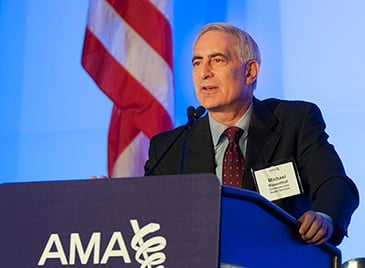Participants in a diabetes prevention program 15 years ago continue to have lower rates of type 2 diabetes development than those assigned to a placebo, according to the latest findings of the Diabetes Prevention Program Outcomes Study presented at the American Diabetes Association’s 74th Scientific Sessions in June.
The three-year study was conducted as an extension of the Diabetes Prevention Program, funded by the National Institutes of Health (NIH), which originally found that a lifestyle program designed to reduce weight and increase activity levels decreased the development of type 2 diabetes among adults with prediabetes by 58 percent. The latest findings showed that 15 years after the start of the study, participants originally assigned to the lifestyle intervention group still experience a 27 percent reduction in the rate of type 2 diabetes.
The results may indicate that similar success can be achieved through the YMCA’s Diabetes Prevention Program, which is based on the NIH study and also uses lifestyle intervention and coaching in people at risk of developing type 2 diabetes.
The AMA is partnering with the YMCA of the USA as part of the AMA’s Improving Health Outcomes initiative to increase referrals to this lifestyle intervention model and create a feedback mechanism from the program to physicians. Physician pilot sites in three states are screening patients for prediabetes and referring patients to the program at a local YMCA. Participating physicians receive updates on their patients’ progress to incorporate into their care plans.
Michael Rosenthal, MD, a family physician and chair of the department of family and community medicine at Christiana Care Health Services in Wilmington, Delaware, has been referring patients to the YMCA’s program for two years and is participating in the AMA pilot. Dr. Rosenthal points to the importance of the clinical-community linkage the program provides.
“If I would see someone with prediabetes at risk for developing diabetes, for 20 minutes at a time every two months, you’d say that’s pretty good,” he said in a recent AMA panel discussion. “A 20-minute office visit every two months, that’s seeing them quite a lot, right? That’s two hours in a year. What would they be doing the other 364 days and 22 hours of their life that year that I wasn’t with them? How much can I really influence them in that short period of time?”
That’s where the Diabetes Prevention Program comes in, Dr. Rosenthal said.
“We think that the medicines and the advice we give should do it, and we sometimes don’t realize the strength that could be out there with others, like community organizations,” he said. “I can order a lab, or an X-ray, or even a drug … it shouldn’t be that much harder to order a referral to the YMCA for my patient who’s got prediabetes.”
Visit the Center for Disease Control and Prevention’s National Diabetes Prevention Program website to find out whether an evidence-based diabetes prevention program is available in your community.




